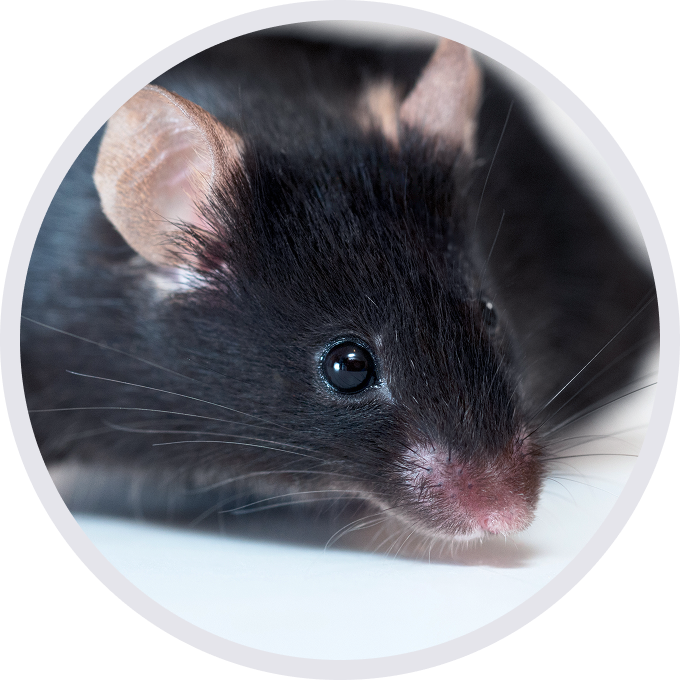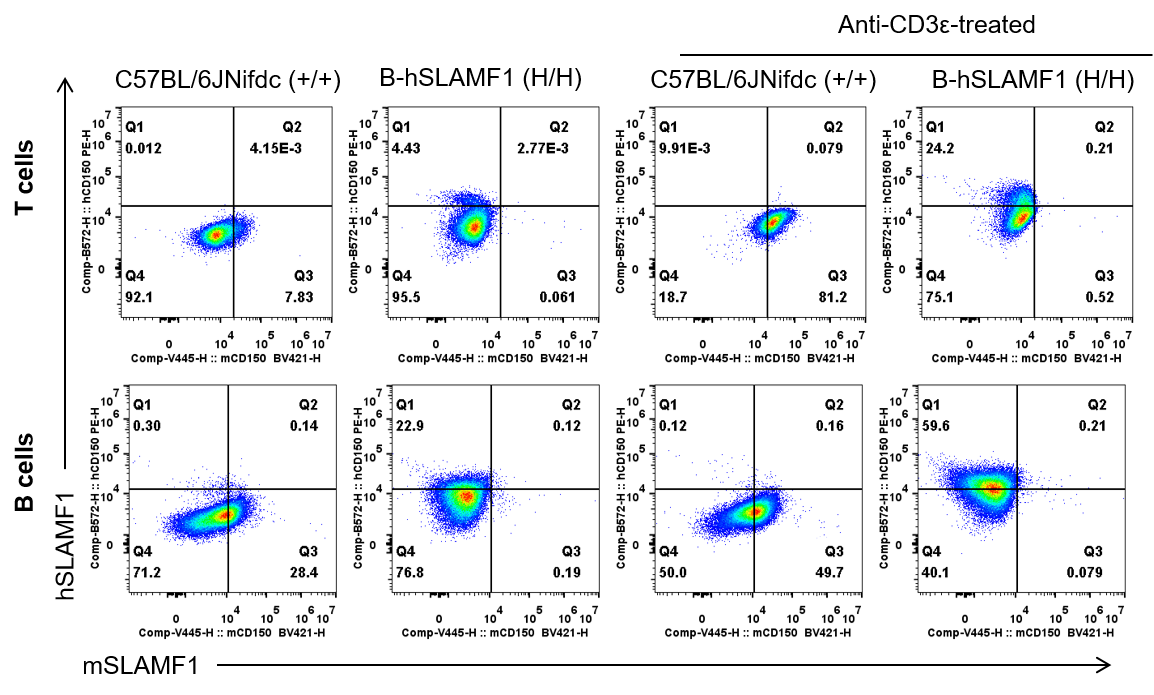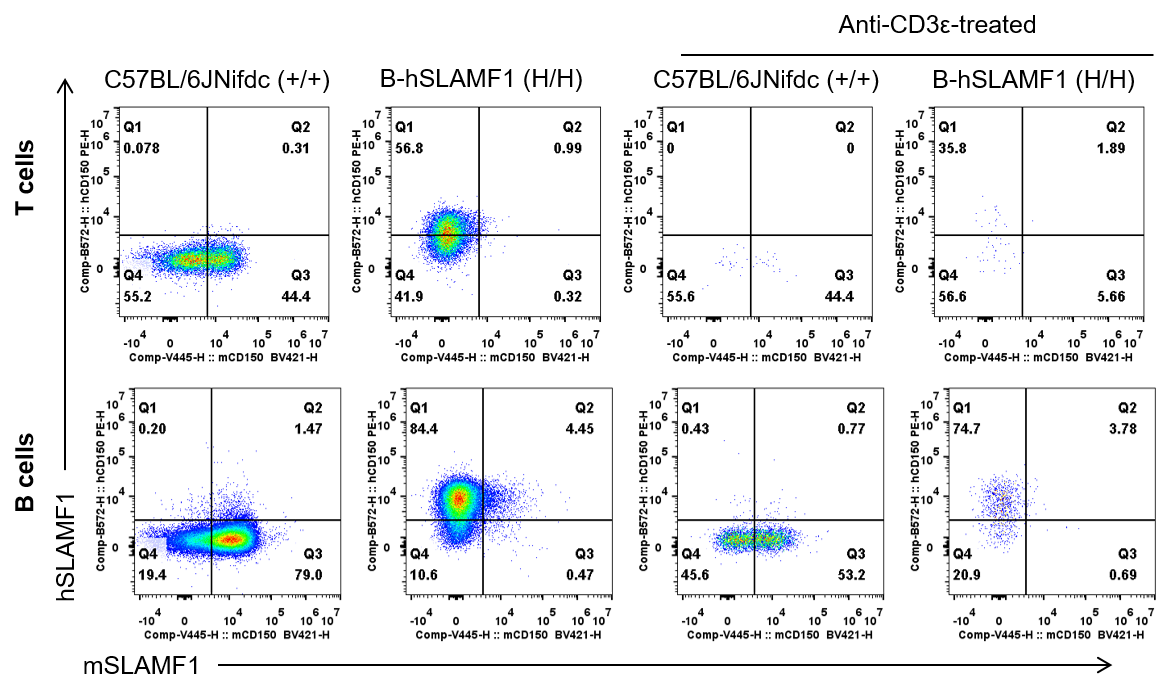
C57BL/6-Slamf1tm1(Slamf1)Bcgen/Bcgen • 112878

Strain specific SLAMF1 expression analysis in wild-type C57BL/6JNifdc mice and homozygous humanized B-hSLAMF1 mice by flow cytometry. Splenocytes were collected from wild-type C57BL/6JNifdc mice (+/+) and homozygous B-hSLAMF1 mice (H/H) stimulated with anti-mouse CD3ε antibody (7.5 μg, i.p.) in vivo for 24 hrs (female, 6-week-old, n=1). Protein expression was analyzed with anti-mouse SLAMF1 antibody (Biolegend, 115943), and anti-human SLAMF1 antibody (Biolegend, 306307) by flow cytometry. Mouse SLAMF1 was only detectable in wild-type C57BL/6JNifdc mice. Human SLAMF1 was exclusively detectable in homozygous B-hSLAMF1 mice. The expression of m/hSLAMF in T cells were both increased after 24 hours of intraperitoneal injection of anti-mouse CD3ε antibody.

Strain specific SLAMF1 expression analysis in wild-type C57BL/6JNifdc mice and homozygous humanized B-hSLAMF1 mice by flow cytometry. Blood were collected from wild-type C57BL/6JNifdc mice (+/+) and homozygous B-hSLAMF1 mice (H/H) stimulated with anti-mouse CD3ε antibody (7.5 μg, i.p.) in vivo for 24 hrs (female, 6-week-old, n=1). Protein expression was analyzed with anti-mouse SLAMF1 antibody (Biolegend, 115943), and anti-human SLAMF1 antibody (Biolegend, 306307) by flow cytometry. Mouse SLAMF1 was only detectable in wild-type C57BL/6JNifdc mice. Human SLAMF1 was exclusively detectable in homozygous B-hSLAMF1 mice. The number of T/B cells in blood were decreased after 24 hours of intraperitoneal injection of anti-mouse CD3ε antibody.